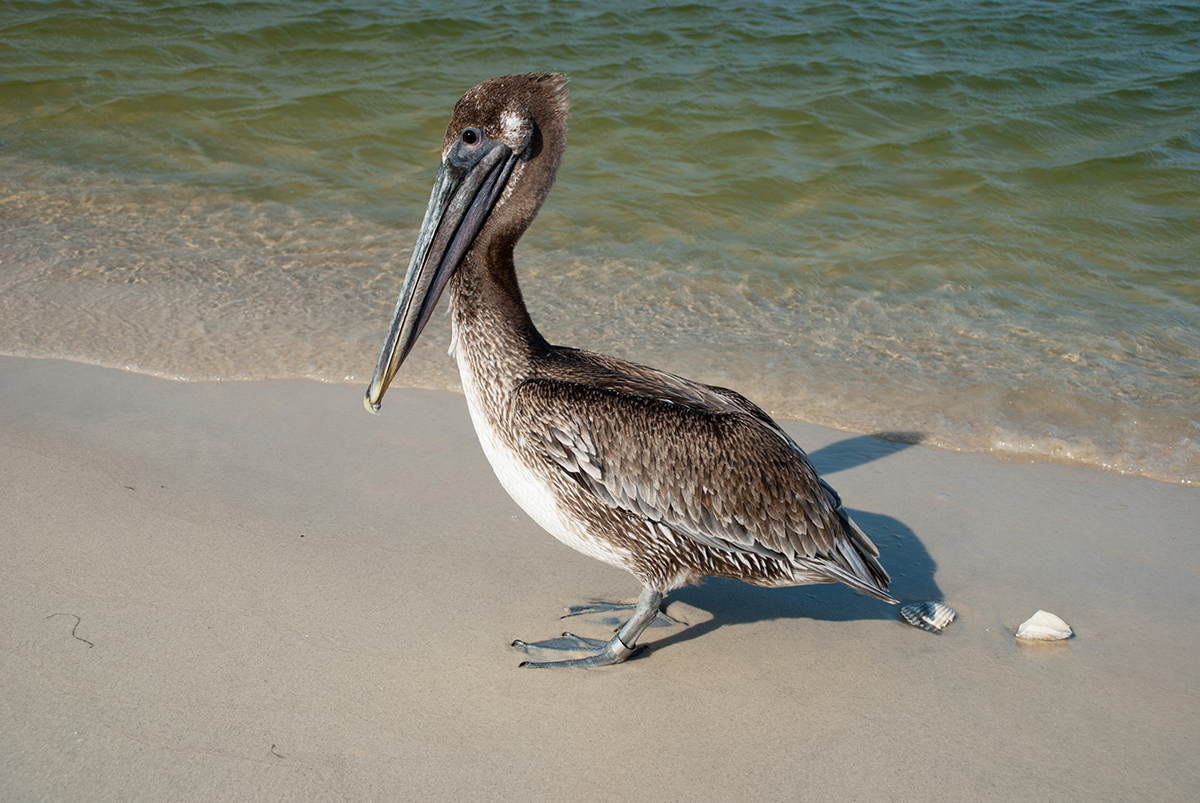 Menu
Menu
- News & Events
- Company News
- Louisiana State Agencies Join Forces to Restore a Critical Habitat for Brown Pelicans

News & Events
Louisiana State Agencies Join Forces to Restore a Critical Habitat for Brown Pelicans
October 17, 2017
Queen Bess Island Rehabilitation Project will rebuild 32 acres of critical habitat for Louisiana’s brown pelican population.
Two state agencies in Louisiana are on a mission to rebuild Queen Bess Island, a long-time sanctuary for the state bird, the Brown Pelican.The island is located in Barataria Bay, northeast of Grand Isle. Queen Bess Island is a prime destination and preferred breeding spot for brown pelicans because of its proximity to the Gulf of Mexico and isolated location. Due to erosion and subsidence, this critical nesting habitat can no longer support the number of birds needed for the population to thrive to its fullest capacity. Currently, approximately 5 acres of the 37-acre island provides a suitable habitat for nesting.
On a mission to protect the Louisiana Brown Pelican population, the Coastal Protection and Restoration Authority of Louisiana (CPRA) and the Louisiana Department of Wildlife and Fisheries have joined forces to restore Queen Bess Island to maximize the habitat acreage for the state bird. The first order of business will be a site visit to the island by agency representatives and coastal specialists from C. H. Fenstermaker & Associates, L.L.C., the firm selected to coordinate the engineering and design phase of the island restoration. In the first few weeks of the project, the Fenstermaker team will survey the site and identify any hazards such as pipelines, wellhead locations, and avoidance areas such as oyster leases. Next, engineers will perform geotechnical assessments to determine the type of design and materials the island will support. The third phase will be the processing of all collected data. Finally, Fenstermaker’s coastal engineers will begin the design process, and then submit plans to the host agencies. Dr. John Foret, Vice President of Fenstermaker’s Environmental Division and leader of the firm’s coastal team says, “This is a humbling opportunity to work with the CPRA and LDWF towards the common goal of improving nesting habitat for the brown pelican.” Dr. Foret has an extensive career in coastal restoration efforts throughout the state. He was a Research Biologist for the Department of Conservation (DOC), National Oceanic Atmospheric Administration (NOAA) and National Marine Fisheries Service (NMFS). Dr. Foret has coordinated many efforts associated with the Coastal Wetlands Planning, Protection, and Restoration Act (CWPPRA). He has been an advocate and lead contributor to coastal fisheries habitat restoration for the NMFS in southwest Louisiana and was Federal Project Manager for many CWPPRA projects.
The timeline of the Queen Bess Island Restoration project is critical because of a complexity of factors involved, including the delicate nature of the nesting cycle of the brown pelican. Nesting season for the birds is March to early September so field crews must have all work for the design and planning phase completed and be off the island during that period. The same will be true during the actual construction phase, so efficient construction management of the project will be crucial.

Your company’s success is our business
Discover our industry-leading products and service that our customers have been trusting in for decades. Whatever your need, we’re here.